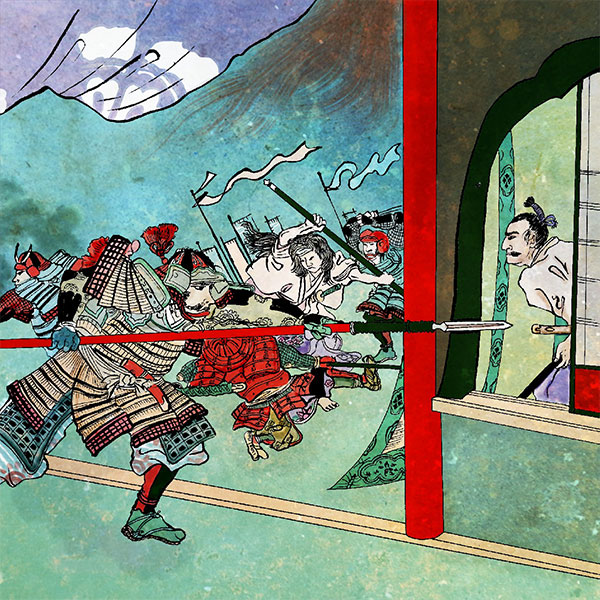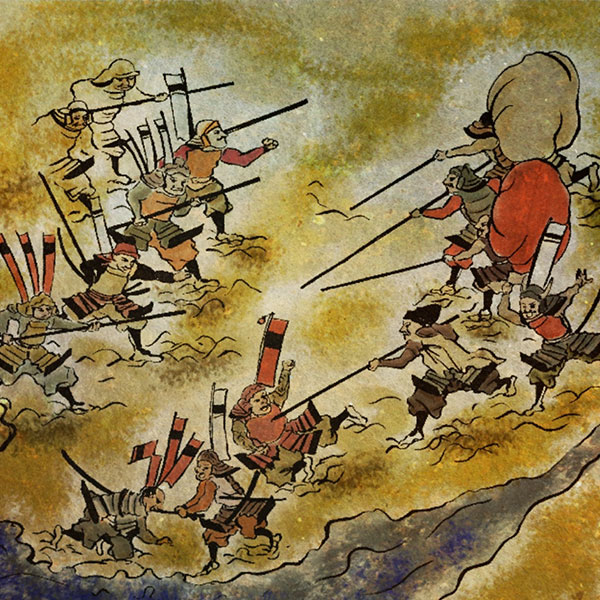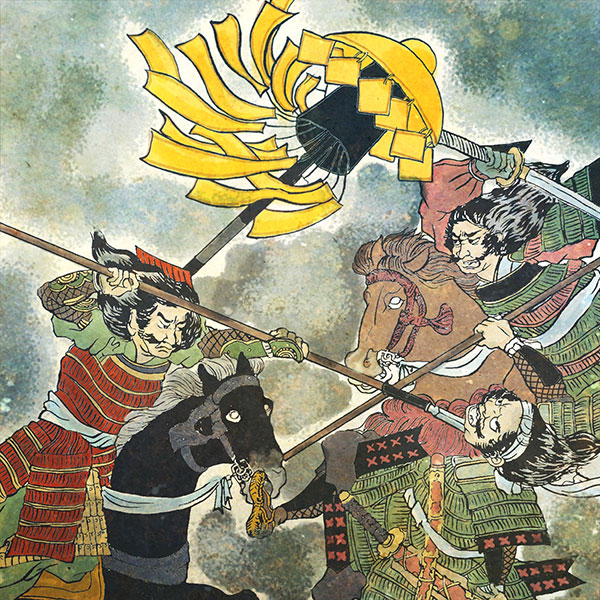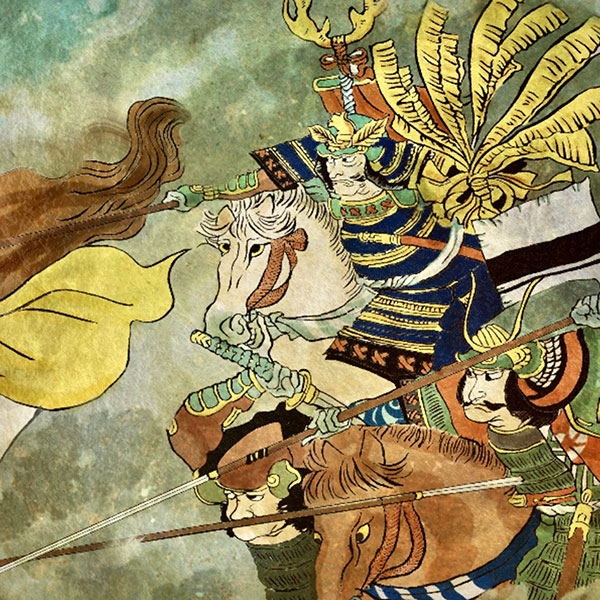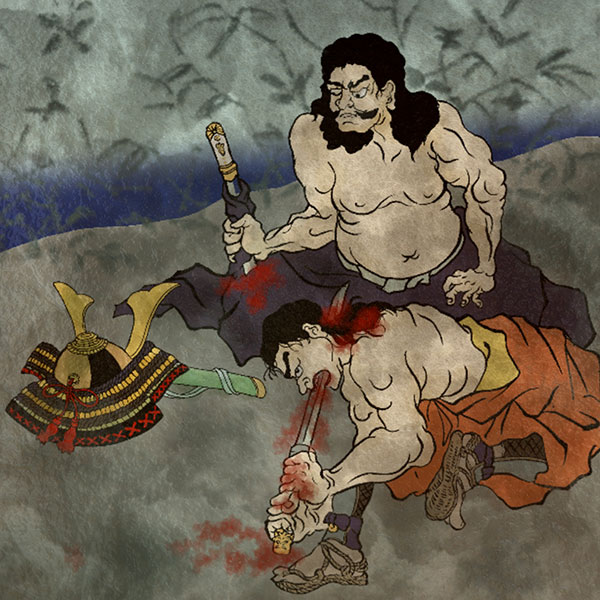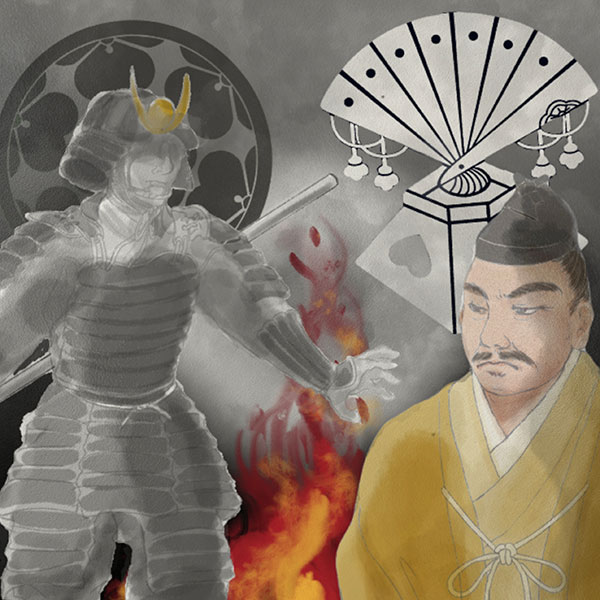Mitsuhide Akechi (2/2)One of the wisest generals in the Sengoku period
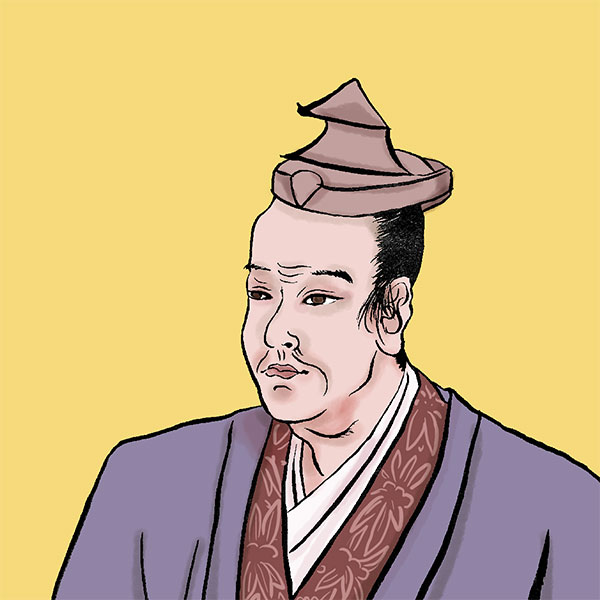
Mitsuhide Akechi
- Article category
- biography
- name
- Akechi Mitsuhide (1528-1582)
- place of birth
- Gifu Prefecture
- Related castles

Fukuchiyama Castle
- related incident
On January 15, 1576, the lord of Yakami Castle, Hideharu Hatano, betrayed the castle, and was caught by surprise and forced to flee.
On November 7 of the same year (November 27, 1576 [note 2]), his beloved legal wife, Hiroko, died of illness at Sakamoto Castle. It is said that he was overcome with deep sadness. Around this time, Mitsuhide used Amarube Castle as his base in Tanba, but decided to build a castle in Kameyama (present-day Kameoka City, Kyoto Prefecture) as a stable base, and began preparations in January of the following year, 1577. started.
In March 1578, when Naomasa Akai of Hikami District died of illness, he again went to Tamba and forced Ujitsuna Araki of Sonobe Castle to surrender, but on April 29th, he was sent as reinforcements to Hideyoshi who was attacking Mori. As he was dispatched to Harima Province, in September a large-scale rebellion broke out among Tanba people, and even Umahori Castle, which was a strategic point for the defense of Kameyama Castle, was temporarily occupied. Mitsuhide hurriedly entered Kameyama Castle. We recaptured the castle that had been stolen.
In 1579, the attack on Tanba was in its final stage, but in January, Eiaki Obata, one of the few Tanba natives who was consistently pro-Oda, was killed in a counterattack by Hatano's army. . On August 9th, he captured Kuroi Castle and finally conquered Tamba Province. Furthermore, he pacified Tango Province in cooperation with Fujitaka Hosokawa.
In 1580, he received a letter of commendation from Nobunaga. As a result of this achievement, he was able to increase the amount of land in Tanba Province (approximately 290,000 koku), bringing the total to 340,000 koku. Mitsuhide built Kameyama Castle and Shuyama Castle, and renovated Yokoyama Castle and renamed it Fukuchiyama Castle. Kuroi Castle was expanded and the chief retainer, Toshizo Saito, was added to the castle, and Fukuchiyama Castle was filled with Hidemitsu Akechi.
Honnoji Incident
In May 1582, Akechi Mitsuhide was selected to serve as a receptionist for Tokugawa Ieyasu and others at Azuchi Castle, but was relieved of his duties due to his clumsiness. Afterwards, he was ordered to support Toyotomi Hideyoshi's Mori conquest, and was sent to the front in the early morning of June 2nd. Every day, I visit Mt. Atago and participate in renga gatherings.
It is said that while on his way to the front, Mitsuhide announced his intention to subjugate Nobunaga to his senior vassals.
It is said that the military, including senior vassals, headed for Kyoto with the message, ``Ranmaru Mori sent a message saying that Lord Nobunaga would like to inspect the formation and military uniforms of Akechi's army.'' Mitsuhide's army raided Honnoji Temple in Kyoto, where Nobunaga was staying, and surrounded it. It is said that Nobunaga, who had less than 100 of his forces close to Mitsuhide's army of 13,000, fought bravely, but committed suicide by setting the temple on fire. Mitsuhide desperately searched for Nobunaga's remains, but was unable to find them.
Afterwards, they jointly killed Nobunaga's eldest son Nobutada Oda and his cousin Toshiharu Saito who were in the Nijo New Imperial Palace, Sadakatsu Murai and his son Sadanari Murai who came to support him, Kiyotsugu Murai, and Nobunaga's horse crew.
The reason for the Honnoji Incident is still unknown. There are various theories, including the theory that he had a grudge against Nobunaga and the theory that he was the mastermind of the Imperial Court, but none is definitive.
Battle of Yamazaki and the end
Mitsuhide after the Honnoji Incident. After capturing Kyoto, they immediately hunted down the remnants of Nobunaga and Nobutada, father and son.
Furthermore, they tried to enter Azuchi Castle and suppress Omi, but Seta Bridge was burnt down and they could no longer cross Lake Biwa, so it took three days to build a temporary bridge.
Mitsuhide first entered Sakamoto Castle and conquered most of Omi by June 4 of the same year, and on June 5, he entered Azuchi Castle and stole famous items from the gold and silver treasures stored by Nobunaga and gave them to his vassals and allies. Masu.
Mitsuhide prepares for battle with the remaining senior retainers of the Oda family. However, Yusai Hosokawa and Tadaoki, who were related by marriage, refused to side with Mitsuhide. In addition, military commanders in the Kinai region, such as Tsutsui Junkei, sided with Toyotomi Hideyoshi, who had returned from the Mori attack, which greatly disrupted his plans. Frois points out in his "History of Japan" that a major factor was that Hideyoshi suppressed the Settsu people, including Ukon Takayama, first.
Upon learning of the Honnoji Incident, Toyotomi Hideyoshi's army hurriedly made peace with the Mori clan and returned from Bicchu Takamatsu Castle on the Chugoku Route. The collision occurred in an area that straddles Oyamazaki Town and Shimahon Town, Osaka Prefecture).
At the time of the decisive battle, the Toyotomi army had 27,000 soldiers and the Akechi army had 17,000 soldiers. The fierce battle quickly came to a close, and Mitsuhide was defeated. Late at night on the same day, Mitsuhide was killed by a farmer who was hunting fallen samurai in Ogurisu (present-day Ogurisu, Fushimi Ward, Kyoto City, Kyoto Prefecture) as he fled towards Sakamoto Castle.
Akechi Mitsuhide and Fukuchiyama Castle
Fukuchiyama Castle is built on a small hill in the city. This castle was built in 1579 by Akechi Mitsuhide, who conquered Tamba Province.
After Mitsuhide, it was Yutaka Arima who entered Fukuchiyama Castle for his meritorious deeds at the Battle of Sekigahara, and the current castle and castle town were completed during this period.
This castle, which is located in a strategic location along the San'in Road, was renovated as a modern castle and left in its current form.
In 1873, most of the castle was demolished except for the stone walls and some remains due to the Castle Abandonment Ordinance, but in 1986, the castle tower was restored as a result of citizens' one-tile campaign.
Currently, it is maintained as Fukuchiyama Castle Park and is carefully protected as a designated cultural property of the city. It is recorded that Mitsuhide was admired by the people of his territory as a wise man who practiced good governance, and the Fukuchiyama Mitsuhide Museum has an exhibition area where you can experience the trajectory of Mitsuhide Akechi based on existing important materials.
Festivals and spots related to Akechi Mitsuhide
- Goryo Shrine
- More than 100 years after the Honnoji Incident, the then lord of Fukuchiyama Castle, Kuchiki Tanemasa, founded Goryo Shrine by enshrining the spirit of Mitsuhide Akechi in the shrine dedicated to Uga Goryo Okami.
It is said that the people of the territory, who had passed down stories of Mitsuhide's good governance, were overjoyed, and the ``goryoe'' held for Mitsuhide suddenly became very popular.
The shrine enshrines the spirit of Mitsuhide Akechi and has a collection of Mitsuhide's handwritten letters and family military law. In addition, in Goryo Park next to the shrine, there are signs indicating the flood level caused by Typhoon No. 13 in 1950, and a mechanical clock with dolls popping out of it. - Fukuchiyama Castle Festival
- It is a traditional festival that heralds spring in Fukuchiyama, and commemorates the rebuilding of the castle tower of Fukuchiyama Castle built by Akechi Mitsuhide in 1986.The ``Commerce and Tourism Festival'', ``Science and Nikko Expo'', and ``Fukuchiyama Demon Festival'' are held. The festivals that have been held in the past have been compiled into the "Fukuchiyama Castle Festival", which continues to this day. The festival is held at places associated with Mitsuhide Akechi (Fukuchiyama Castle and Goryo Shrine), and is a popular festival for the citizens of Fukuchiyama, featuring food, stage shows, and parades.
Reread Akechi Mitsuhide's article
- related incident

- WriterTomoyo Hazuki(Writer)I have loved history and geography since my student days, and have enjoyed visiting historical sites, temples and shrines, and researching ancient documents. He is especially strong in medieval Japanese history and European history in world history, and has read a wide range of things, including primary sources and historical entertainment novels. There are so many favorite military commanders and castles that I can't name them, but I especially like Hisashi Matsunaga and Mitsuhide Akechi, and when it comes to castles, I like Hikone Castle and Fushimi Castle. Once you start talking about the lives of warlords and the history of castles, there's a side of you that can't stop talking about them.


